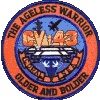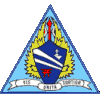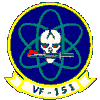| |
|
|
|
Richard Champ Clark
Lieutenant
VF-151, CVW-15, USS CORAL SEA, TF 77, 7TH FLEET United States Navy Tacoma, Washington June 16, 1941 to November 02, 1973 (Incident Date October 24, 1967) RICHARD C CLARK is on the Wall at Panel 28E, Line 59 See the full profile or name rubbing for Richard Clark |
   |

  |
|
My first visit to The Wall was September 2000. Powerful, sad, moving, beautiful, poignant, proud, honored to experience it yet deeply saddend that events prompted its existence. I had always wanted to wear an MIA/POW bracelet but never had the courage or motivation to do so until this visit. I was aimlessly looking through the bracelets when the thought came to look in the state I lived in ... Washington. The first name in that section was LTJG Richard C. Clark, hometown Tacoma. Since I worked in a town less than 10 miles away, I sensed this was "divine intervention", so I bought a bracelet with his name on it, and haven't taken it off since. I think of him daily ... and hope he is in God's hands, either on this planet or elsewhere ... I wanted to contact his family, to let them know I was proud to wear the bracelet with their son's name on it, and to thank them for their ultimate sacrifice ... and in reading about this process, learned that I am not supposed to contact the family directly. And I understood why. I was sad to learn there were no memorials for LTLG Richard Champ Clark today, and so I want to memorialize him ... and thank him for his part, and his ultimate sacrifice, and so he knows he is not forgotten.
Daniel E. Wolf |
|
I wear a bracelet with his name on it almost every day; he is in my heart and prayers. May God Bless Him for dying for our country.
Kristen Gambles |
|
I also wear this MIA/POW bracelet, and I hold it very dear to my heart, and I will always keep him and his family in my prayers. |
|
I also proudly wear a POW/MIA bracelet with his name on it. I was pleased to meet a friend of his family at a medical facility in the pharmacy area. She mentioned how proud she was that I wore this bracelet and how much it means for his family. I swore after that day the only time I would remove it is in a life or death situation or I had to have surgery of any sort. Goddess bless and good luck to his family!
Polly |
|
I bought my bracelet back in 1990. I was fresh out of Air Force basic and Tech school. My first station was Fort Belvoir, Virginia, about 25 minutes from D.C. That was my first time at the Wall. It was a very moving moment as I had grown up at the end of the war and not realized anything about it really other than what was taught in school. Seeing all those names and watching my father actually find names of friends he had fought beside and lost there was unbelievably touching. There was a booth set up in front of the Lincoln Memorial selling MIA/POW breclets. That's when I knew I had to have one. For me it meant many things, honoring a fallen comrade, honoring past veterans, including my dad, and hopefully bringing a little awareness to the world. I have only taken my bracelet off perhaps 6 or 8 times since I've had it and plan on wearing it the rest of my life. It has brought some awareness as people often ask me what my bracelet is. I gladly tell them what I know of Lt. Clark. It is an honor to represent him in his passing. If his family were able to be contacted I guess I would just like to tell them that Lt Clark and his contributions TRULY are not forgotten. As well as his friends and all the other servicemen and women that served and/or were lost. GOD BLESS YOU
Terry L. Barnes |
Notes from The Virtual WallOn 24 October 1967 the Air Force and Navy staged a coordinated attack on Phuc Yen Air Base in North Vietnam, the first attack on the airfield. The Navy contributed carrier-based Combat Air Patrol forces, while the USAF bombers came from bases in Thailand.Fighter Squadron 151, embarked in USS Coral Sea, was tasked with providing a section of F-4B aircraft positioned over Thud Ridge on the bombers' approach path to Phuc Yen. The section consisted of
Over the next few days, Hanoi Radio reported that eight US aircraft had been downed on 24 October and that "a number of US pilots" had been captured (see below) but gave no names. Frishman had been seriously wounded in the arm by missile fragments. A North Vietnamese surgeon eventually removed the elbow joint, shortening the arm by several inches. Frishman then spent the next 18 months in solitary confinement. On 4 July 1969, Frishmann, USAF 1LT Wesley Rumble (389th TFS, shot down 28 Apr 68), and Seaman Douglas Hegdahl (who had fallen overboard from USS Canberra on 6 Apr 67) were interviewed by Italian Journalist Oriana Fallaci for Look Magazine. On 4 August 1969 the three men were released to a peace committee lead by Rennie Davis, a top coordinator for the National Mobilization Committee to End the War in Vietnam. During their post-release debriefings, the three were able to confirm that Gillespie and Lewis (among others) were POWs, but knew nothing of Clark's status. Never the less, all three of the crewmen - Gillespie, Lewis, and Clark - were reclassified from Missing in Action to Captured. While the North Vietnamese intended the release of the three as a positive propaganda move, it backfired: on 2 September 1969 Frishman and Hegdahl held a press conference at the Bethesda Naval Hospital and publicly denounced the atrocious conditions in the POW camps and the NVA's use of torture. Following the Paris Peace Accords, Gillespie and Lewis were repatriated. In his debrief, Lewis stated that he saw Clark slumped over in the rear cockpit and watched the aircraft continuously until it hit the ground - and that he did not see Clark eject. None of the released POWs had any knowledge of Clark. On 02 Nov 1973 the Secretary of the Navy approved a Presumptive Finding of Death for Lieutenant Richard C. Clark. Between September 1988 and December 1990, US/Vietnamese teams repeatedly visited the Tam Dao Mountain area to investigate Clark's loss. An F-4 crash site - probably BuNo 150421 - was located in December 1990, and in January 1991 the Vietnamese turned over aircraft parts, fragments of crew equipment, and a single bone fragment they identified as belonging to LTJG Clark. The bone fragment was tested by the Army's Central Identification Laboratory, Hawaii (CIL-HI) ... but the tests were inconclusive. As of 03 March 2003 LT Richard C. Clark still is carried as "Died while Captured, Body not Recovered". US Air Losses, 24 October 1967 As noted above Hanoi Radio claimed eight aircraft were downed and "a number of pilots" captured. Actually, four aircraft and four crewmen were lost that day:
|
| Contact Us | © Copyright 1997-2019 www.VirtualWall.org, Ltd ®(TM) | Last update 08/15/2019. |